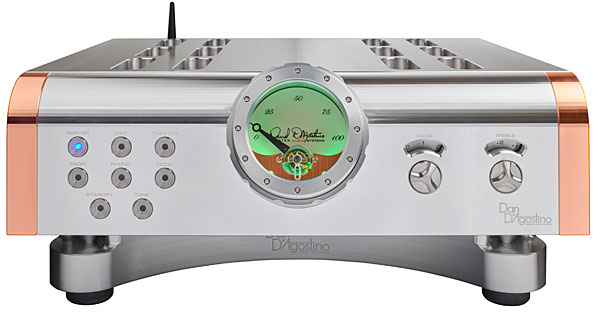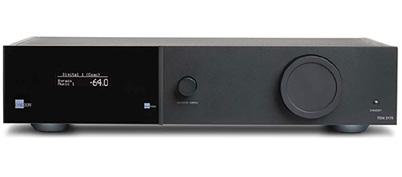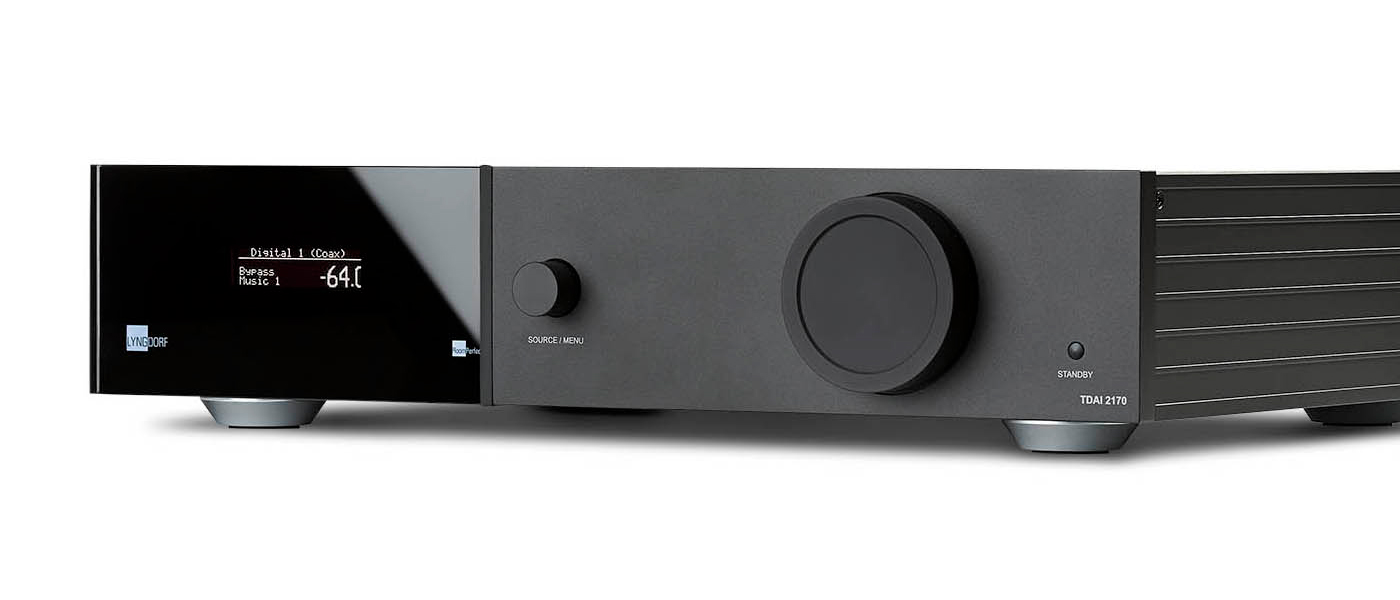What ! there not much under the hood
View attachment 1278
when you compare my monster
View attachment 1279
Bs25 the TDAI-3400 as well as the TDAI-2170 and the TDAI-1120 are digital amplifiers. Hence why you don't see traditional transformer, heatsinks, etc.
If it helps the following two reviews of the TDAI-2170 go into some detail about digital amplification -
Greg Handy reviews Lyngdorf Audio's TDAI-2170 integrated amplifier, which is rated at 170 watts per channel and has a modular design that allows for different input/output configurations.

hometheaterreview.com
"The TDAI-2170 has three notable Lyngdorf design technologies: digital amplification, Room Perfect signal correction, and Intersample Clipping Correction (ICC). Digital amplification, as applied here, is not a loosely worded marketing gimmick, but real science and a newer way to amplify a digital audio signal. Some may criticize that statement, as most technology we see today has been around for a while but was not commercialized due to some impractical hurdle (such as cost) or a missing technological piece of the puzzle. And I am sure that is the case here. So, while the concept may not be new, there are not any digital amplifiers that I am aware of for consumer high-end audio applications that utilize the same technology as the TDAI-2170."
"The TDAI-2170, rated at 170 watts per channel, will take a digital pulse code modulated (PCM) audio signal from any digital source (by USB, HDMI, or digital coax cable) and convert it to a pulse width modulated signal (PWM), with the help of a Texas Instruments Equibit chipset. The PWM signal is then applied to the output stage, which translates it to a low-voltage analog signal, with just two analog components, that will then drive your speakers. Lyngdorf may be the only consumer product that uses a linear non-feedback design operating near a constant 400 kHz."
"Lyngdorf Audio explains that extremely precise and stable signal processing is required because there is no ability to employ negative feedback to correct errors, which is a common technique with both analog and digital amplifiers of a different design. To achieve power-supply accuracy of this level, it must deliver exact voltage to the output stage, regardless of the quality or stability of the electrical power grid that exists in your location. In fact, Lyngdorf states that its system is so stable, there is no need for external power filtering and line conditioning. In return for achieving such precision, the traditional digital-to-analog converter (DAC), analog preamplifier, and analog amplifier, along with all the various gain stages, filtering, conversions, and manipulations that would normally exist in a traditional analog amplifier, are eliminated. Lyngdorf refers to its digital amplifier as a power DAC because, while performing like a DAC, it creates power at the same time to drive the speakers. According the manufacturer, the process is superior to the traditional analog method, since it avoids so many stages of conversion."
"Lyngdorf Audio promises that its digital amplification has several benefits. First, the design offers low noise in the signal path. As a result, the background is claimed to be dead silent. Lyngdorf even suggests testing this with the power on, turning the volume all the way up with no source playing and putting your ear to the tweeter, which will yield no hint of buzz or hiss of any kind. Second, you get bit-perfect clarity due to an undisturbed digital chain, since nothing is lost. Third, dynamic range exists along the entire volume range, due to the use of the power supply as the volume control. We have all experienced the lack of a large clear soundstage at low or even normal listening levels; I know I have, causing me to raise the volume to obtain the best performance or dynamic range. The manufacturer claims this characteristic is significantly eliminated, and that at low volume your system will sound more dynamic."
With their new, fully-digital integrated amplifier, the TDAI-2170, Lyngdorf Audio squarely targets the "iPod Generation" by taking the familiarity and ease of use oft associated with the ubiquitous portable player and combining it with true audiophile sound; all beautifully executed in a clean...

hometheaterhifi.com
"The TDAI-2170, as the name suggests, puts out 170 watts per channel to two channels into 4 Ohms with both channels driven. Although it is technically a “Class D” amplifier, it would be a mistake to assume this is simply a high-end version of a traditional “Class D” amplification."
"The topography of the Lyngdorf Audio TDAI-2170 is true “fully-digital” amplification, not traditional class D. In the TDAI-2170 (using digital inputs) the signal never leaves the digital domain until the final output stage where it converts the PCM signal to PWM output, a relatively simple task.2
"Many of our readers are well versed in the various modes of amplification, but for those who have not committed our Secrets Primer on “
Amplifier Class of Operation” to memory, here is a brief introduction to class D amplification. I feel it is of great importance to understand how the Lyngdorf Audio TDAI-2170 is fundamentally different from other class D amplifiers."
"First, class “D” amplification does not stand for “digital” amplification; although this misnomer has worked its way into our culture so thoroughly I hear it in almost every audio discussion and see it on nearly every audio blog/board. “D” simply happened to be the next letter in the alphabet when it was being defined as a type of amplification. (Yes there is a class “C”, but it has characteristics that make it unsuitable for audio signal amplification and finds most of its use in radio frequency amplification realm.) Class D amplifiers are also referred to as “switching” amplifiers, meaning the transistors (commonly MOFSET) in the amplifier operate as switches (fully “on” to fully “off”) instead of linear gain devices, as in analog audio."
"Second, “digital” amplifiers (with very few exceptions) aren’t totally digital. They actually receive their signal in analog form, then convert it to digital so it can be manipulated/tweaked/caressed, converted BACK to analog, amplified, and sent to the speaker terminals. The more the signal is manipulated, the less and less it sounds like the original signal. Since we really only want the original signal amplified, this causes some problems."
"While there are many faults inherent to class D amplification, I will limit this discussion to the largest faults, as there are books dedicated to the subject. In broad strokes, the timing of the switching in class D amplification is the largest source of audible problems, with “dead time” being particularly guilty. Dead time is the time when both the + and – transistors are “off” and no signal is conducted. Dead time in the tenths of nano-seconds can generate in excess of 1% Total Harmonic Distortion (THD). Moving from 40ns dead time to 15ns dead time can drop the THD from >2% to <0.2%; clearly dead time needs to be as short as possible to create an accurate, low-distortion output signal."
"So a faster clock would be highly desirable? Yes, up to a point. If the switching is faster than the actual transistors can move between fully on and off, you run into the transistor being switched off still conducting when the transistor being switched on starts conducting – resulting in a short."
"As I alluded to above, timing also plays a role in the transistors themselves. The amount of time each transistor spends going between fully “on” to fully “off” can adversely affect the sound and greatly shorten the life of the amplifier itself. This transition creates a state in which each transistor has significant resistance, which produces significant heat. Because class D amplifiers were not designed to handle excessive heat, this can cause significant damage to the circuitry."
"But better timing in amplifiers, much like in its wrist bound brethren, is not cheap, nor is it the best way for mass marketed class D amplifiers to deal with high THD."
"Far and away the most popular method of dealing with some of these inherent errors and improve the noise of the amplifier is by the use of a negative feedback loop. Negative feedback is a method used to correct for the non-linearity of an amplifier by feeding the output waveform of the amplifier back into the input stage enabling the internal circuitry to correct for deviations caused by the pulse-width modulator, output stage, supply voltage, or any internal source of audio distortion. As more and more negative feedback is generated, the THD drops further and further. This sounds like a great idea, and it is . . . to a point. Unfortunately this also amplifies higher order harmonics that may not have been audible previously but now are able to be heard. So while the specs may show an unbelievably low THD, the amplifier itself does not sound anywhere close to perfect; a classic example of theoretical perfection resulting in real world failure."
"To Lyngdorf Audio’s credit, rather than providing a mechanism to compensate for inherent problems with mass-market class “D” amplifiers, they went to the source of the problem(s) . . . and there are many."
"According to Lyngdorf Audio, they have developed a circuit architecture that is free of global feedback."
"For starters, the internal clock used in the TDAI-2170 runs at 400kHz, not just several multiples of the oft used 20kHz (supposed upper range of human hearing), but more than an order of magnitude bigger! This combined with custom, high quality (not to mention fast) transistors nearly eliminates the biggest source of distortion, timing. They also isolate each component to limit the impact each has on the other. Because of this quality of design and build, the TDAI-2170 has NO feedback, and thus no need for a feedback loop! Thus the proverbial dog can stop chasing its tail."
"To demonstrate this lack of feedback, Claus eventually convinced me to do something against all reason. He wanted me to have the TDAI-2170 actively running a signal, press “stop”, put my ear up to the speaker, and quickly turn the volume all the way up. After a brief moment of being convinced I had just gone deaf, I realized what had happened . . . because the TDAI has no internal sources of noise, when there is no signal being amplified there is simply, nothing. This example illustrates the (very near) technical perfection of the TDAI-2170 as an amplifier and serves as the backdrop to one of the best, most enjoyable, listening experiences I have had."






